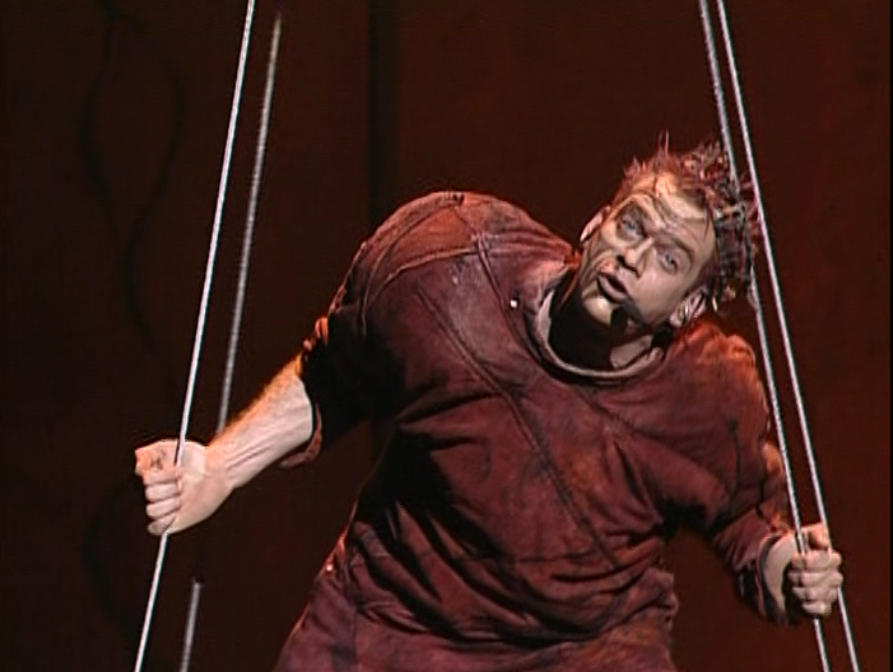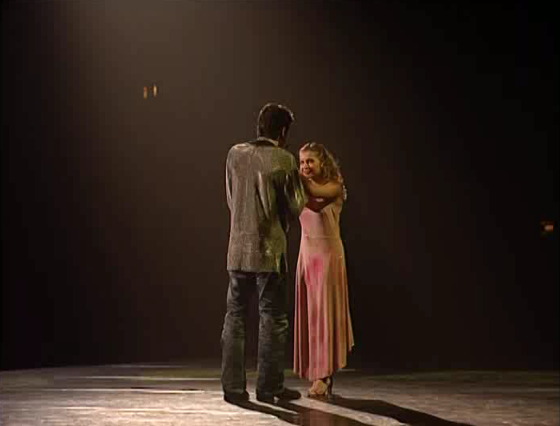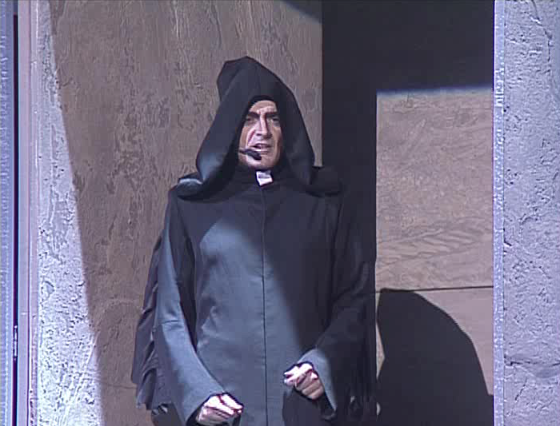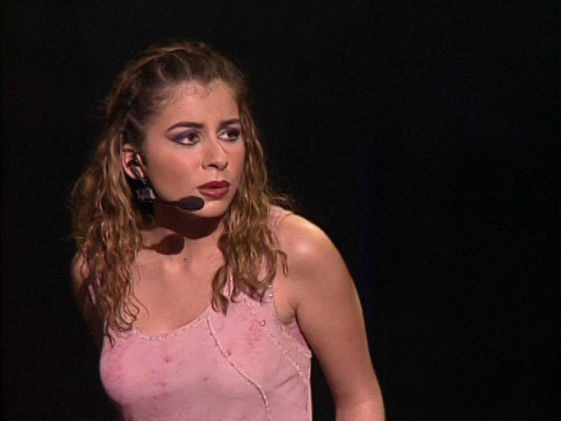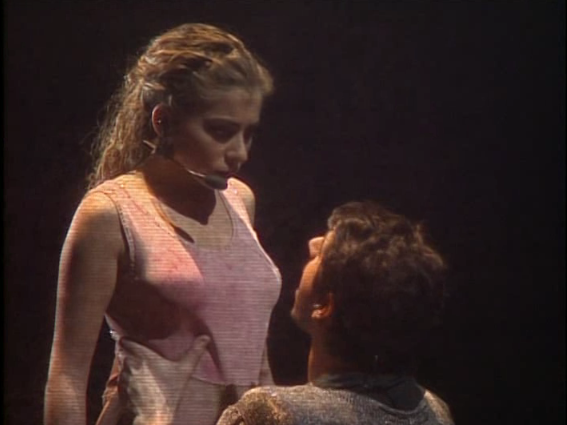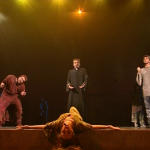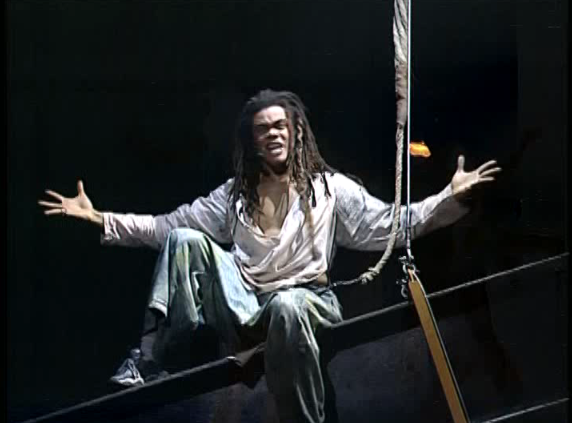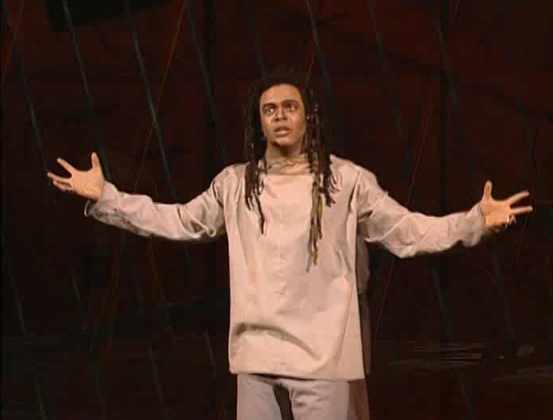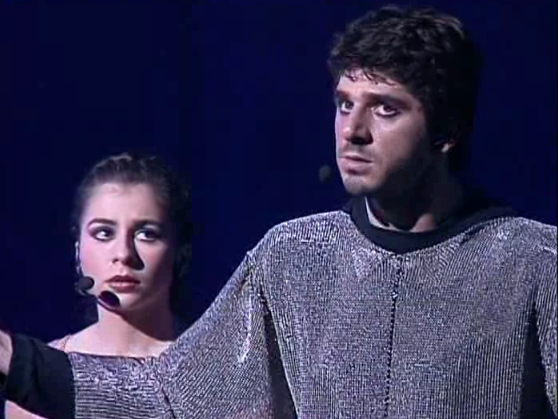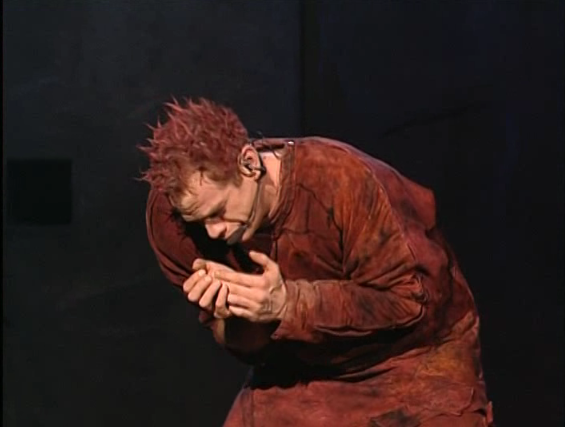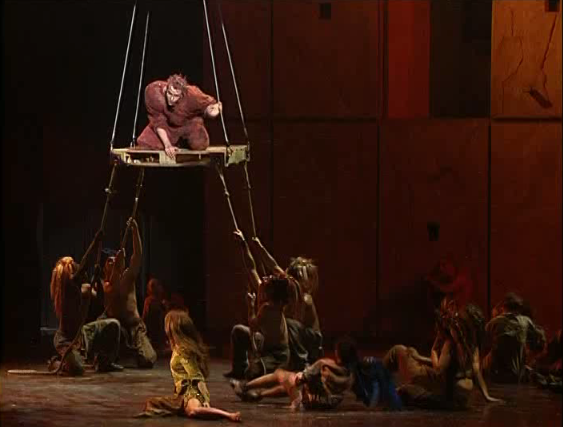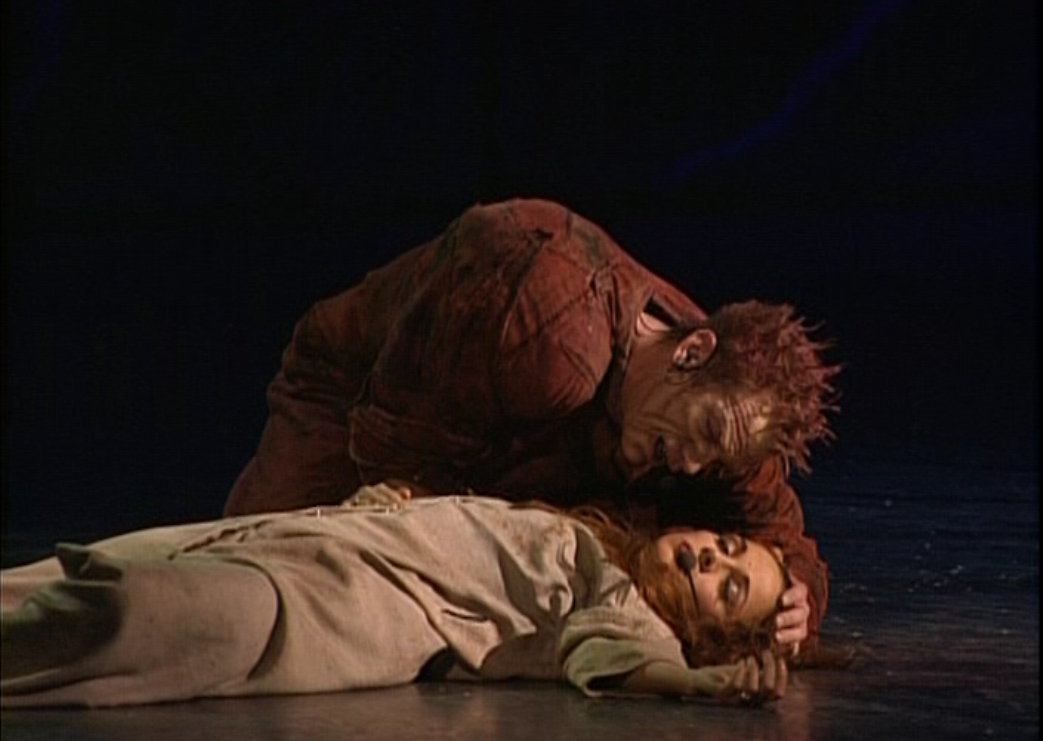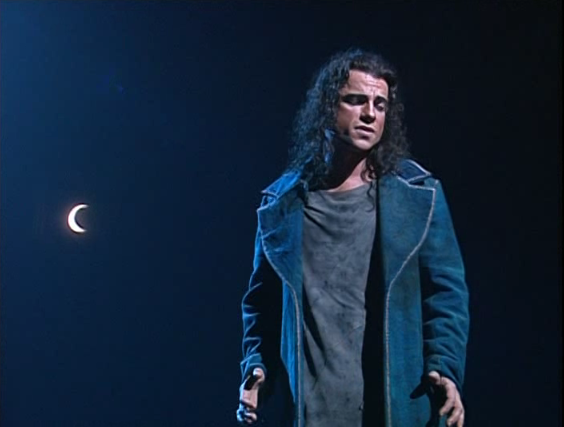Doing four songs this week.
La Fête des fous (The Feast of Fools)
Much like Bohémienne, La Fête des fous is a fun uptempo number with a lot of dancing. It brings us to the start of the book so to speak.
Unlike the book Gringoire isn’t merely having his play ignored, he is running the show much like Clopin in the Disney version. This song also introduces us to Quasimodo, who make his first appearance on stage during this number. AT first he walks down, through the openings of the rock climbing wall of Notre Dame. To be honest it’s not that dramatic but then again there was no build up to Quasimodo so it’s not that bad. Also it might be different if you’re sitting in the audience and you see this shadowing figure vs having a fixed perceptive with edits. Though the flip side of that is you get to see Quasimodo’s expressions which are adorable.
I really do love the lighting, the dancing and Gringoire’s energy in this number however this song is not a favorite of mine. It’s really one note and even for this musical it’s SUPER receptive, take a drink every time they sing La Fête des fous and you will smashed in less than three minutes.
Request – Someone make a Notre Dame de Paris drinking, please drink responsibly
Le Pape des fous (The Pope of Fools)
I mentioned last time about a top ten worst songs of Notre Dame de Paris list, well Le Pape des fous ranked in at number #10.
Why? There are a few reasons but number one, for an introduction song it’s a stall and it gets a very core aspect of Quasimodo’s character just wrong and for a show that is regarded as one of the most accurate to the book it’s just a big problem. That being Quasimodo express a desire for Esmeralda prior to her doing anything nice. Maybe I’m just a book purest but he is basing his affections of her looks but get mad at other for judging him on looks.
The one things I like is that Quasimodo gets a little mad and hoisting him into the air but it’s still a dull introductory song that got its character wrong. On the other hand, most people think this song shouldn’t have been on the worst list.
La Sorcière (The Sorceress)
Ah yeah this song, at one point I had that opening guitar rift as my ring tone. I also love Frollo’s point, classic him. Also spit sync, delightful.
So while I do like La Sorcière it’s a silly little bridge song meant to move the plot forward. It also gives us some insight into Frollo and Quasimodo’s relationship which flows into the song.
L’Enfant trouvé (The Orphan)
The reason why we have four songs this week instead the three* is because La Sorcière and L’Enfant trouvé flow into some much that it’s like they are one song. THough there is a melody and subject shift that it is clear but the way the transition is done in La Sorcière it mean they are companion songs.
Anyway L’Enfant trouvé goes deeper into the Frollo and Quasimodo. It’s the same as it in the book really. However Quasimodo adds that he doesn’t know Frollo’s heart. It’s really great how Frollo is like cold and emotionless as Quasimodo bares his devotion out to him. Gotta love Quasimodo emotions in this song. Is it the best song in the show, nope but it‘s okay.
(Four songs might be a norm, damn bridge songs)
Get the whole GLORIOUS ALBUM HERE


